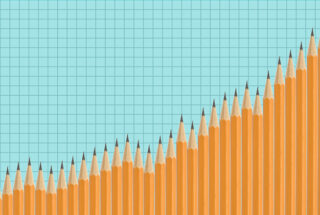Your donation will help us produce journalism like this. Please give today.

Eamonn Fitzmaurice/The 74
Lavinia Aguião is feeling the pressure as a single mother and educator in Washington, D.C. as surging inflation cuts into her back-to-school shopping budget.
“I feel like the most expensive thing is literally clothing, new backpacks and lunchboxes,” Aguião said of her search for supplies this month.
Aguião is not alone in feeling the pinch.
As prices have surged on everything from technology to clothing to backpacks, parents and teachers nationwide are scrambling to afford classroom necessities for kids.
A 2022 Deloitte Back-to-School Survey found 57% of back-to-school shoppers are concerned about inflation anticipating spending surges to reach a new high of $661 per student – an increase of $53, or 8%, from the 2021-22 school year.
The Deloitte survey also found K-12 spending is expected to focus on clothing and accessories compared to last year’s pandemic-fueled technology spree.
According to the National Retail Federation, clothing prices are expected to grow 2.9% for girls’ apparel and 3.4% for boys’ apparel compared to 2019. In addition, technology-related items will grow 2.2% and educational books and supplies will grow 4.5%.
But experts say parents are willing to spend the extra funds for their children.
“Even as economic and inflationary pressures sit top of mind, parents seem resilient and determined to ensure their children get the school supplies needed to succeed this coming year,” said Nick Handrinos, Deloitte vice chair and U.S. retail and consumer products leader.
To ease costs, many parents plan to reuse school supplies, skip travel plans or dip into savings, according to NPR.
“Generally speaking, American shoppers are still spending a lot on back-to-school supplies — certainly more than before the pandemic,” NPR found. “But financial anxiety is now a common part of the experience.”
This rings true for Sabrina Ortiz-Santos, an incoming 1st grade Spanish and math teacher at Bancroft Elementary School in Washington, D.C., who, like many teachers across the country, has often drawn from her own salary to purchase classroom essentials.
The bulk of Ortiz-Santos’s back-to-school spending has been cleaning supplies and other COVID-19- related items.
“The school I was previously at was very helpful in the beginning, but as the weeks went on I found myself having to repurchase a lot of the things that were running out,” Ortiz-Santos said. “To get the classroom ready and prepared for the first day, I’ve definitely spent more than $500.”
However, this experience does not always resonate with families in her community.
Ortiz-Santos also works as a teacher at D.C.’s Theodore Roosevelt High School and often supports newcomer students.
“It gets progressively harder each year for these families to provide the resources their kids need,” she said. “But schools like [Theodore Roosevelt High School] are mindful of the economic circumstances their students face and go to great lengths to provide them with things like a hotspot and a tablet.”
Aguião said parents in her community are not always eager to accept help from their school.
“It’s kind of embarrassing,” Aguião said. “So I always tell my son’s friends that if they can’t get supplies let me know and I’ll get supplies for them too.”
Although the Deloitte survey found technology-related purchases have reached a saturation point, DonorsChoose, a project-based website for teachers, technology-related items continue to be a high priority request, said organization spokesman Juan Brizuela.
According to Brizuela, DonorsChoose fully funded 342,108 projects in the 2021-22 school year — a significant hike compared to the 261,282 projects in the 2020-21 school year and the 262,959 projects in the 2019-20 school year.
“Since the pandemic hit, we saw quite a big jump in instructional technology,” Brizuela said, adding that included requests for items such as digital software for the classroom, and headphones for students while they’re at home doing school work and hoping to avoid distractions.